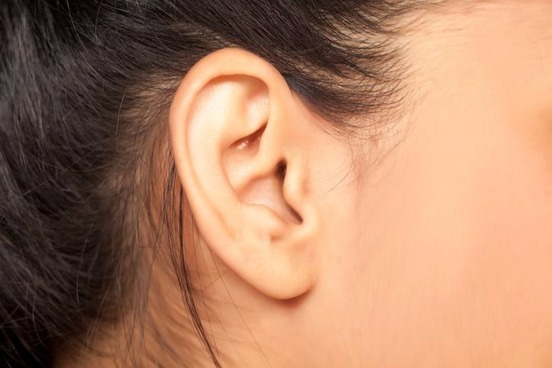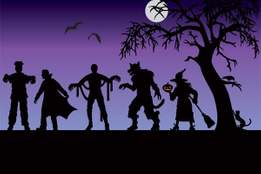
Phiz
: face
This charming synonym of face packs a punch:
The real Truth is, any one would guess him to have been a seven Years Apprentice to the Prince of Darkness; for he is never without a pair of Tormentors in his Hand, and the Devil in his Mouth, and his Phiz so everlastingly reaking with Sweat and Greafe, as if he was come just piping hot from Old Nick's Kitchin.
Edward Ward apparently did not think so highly of sea cooks. The above is taken from the "A Sea-Cook" chapter of his 1744 The Wooden World Dissected in the Character of a Ship of War. The book is a collection of "characters"—that is, short literary sketches of particular social types.
Phiz had, according to the currently available evidence, been around for about 60 years at the time of Ward's book. It's a playful shortening and alteration of the word physiognomy, which refers to facial features. It sees little use now, but appears in the works of Nathaniel Hawthorne, George Eliot, Herman Melville, and Lucy Maud Montgomery, among others.

Kibe
: heel
Kibe most often refers to "ulcerated chilblains [that is, cracked and swollen sores caused by exposure to cold] especially on the heel," but it can also mean simply "heel."
When Shakespeare's Hamlet complains to Horatio that "the age is grown so picked that the toe / of the peasant comes so near the heel of the courtier he galls / his kibe" he is making a statement about how commoners are of late becoming wisecrackers who annoy their social superiors, specifically by (figuratively) chafing the sore and swollen heels of said superiors with their toes.
The word comes from Middle English, but little beyond that is known about its history.

Supercilium
: the region of the eyebrows : eyebrow
In Latin supercilium means "eyebrow" or "ridge" or "pride." In English it carries that first meaning as well, and also hints at the second in meanings referring to Greek and Roman architectural elements and to the lintel of a door. The "pride" meaning of supercilium is evidenced in English in the related adjective supercilious, meaning "coolly and patronizingly haughty"—and in the raised eyebrows of the supercilious themselves.
The plural of supercilium is supercilia:
The supercilia, or eye-brows, are the two hairy arches situated at the lower part of the forehead, between the top of the nose and temples, in the same direction with the bony arches which form the superior edges of the orbits. Their colour is different in different persons, and often in the same person different from that of the hair on the head: the hairs of which they consist are strong and pretty stiff, and they lie obliquely, their roots being turned to the nose, and their points to the temples.
— Encyclopaedia Britannica, 1771

Thrapple
: throat, windpipe
I found Masters Welsh and Hume already on the steps o' the Bilboe; and Master Hume was actually clearing his thrapple; and screwin' up his mooth, and his cheek muscles to the screaming pitch.
— William Craig Brownlee, The Whigs of Scotland, 1833
Thrapple comes from Scottish, from the synonymous dialectal word thropple. That word is believed to come from the Middle English throppill, though the Oxford English Dictionary reports that thropple may in fact be a contraction of throat-boll, a word for "Adam's apple." We're fine with the resulting degree of uncertainty on the etymological front. The important thing is that people know the word is available for use and apply it when they feel the need.

Popliteal space
: a lozenge-shaped space at the back of the knee joint
Ultrasound scanning techniques were used to examine the popliteal space in 102 knees.
— J.R. Carpenter et al., abstract in Mayo Clinic Proceedings, August 1976
Popliteal alone means "of or relating to the back part of the leg behind the knee joint," and that little lozenge-shaped space back there also goes by the catchy moniker of popliteal fossa. (Fossa is a handy word for an anatomical pit, groove, or depression.)

Pinna
: the largely cartilaginous projecting portion of the external ear
Normally, the outer ear, known as the pinna, collects sound waves and directs them into the ear canal, which carries the sound waves to the eardrum.
— Jerome Groopman, The New Yorker, 9 & 16 Feb. 2009
The greater portion of the human ear goes unseen by most of us most of the time, but of the parts that are seen only one of them has a common name. We all know the earlobe, of course, but the pinna is everything else we see.
The word, which has plural forms of either pinnae or pinnas, can also refer to another projecting body party, such as a feather, wing, or fin—pinna is Latin for "feather" or "wing"—or to a leaflet or primary division of a pinnate leaf or frond.
The word auricle is also used to refer to the pinna of the ear, but is more commonly used to refer to a part of the heart.

Hallux
: the innermost digit (such as the big toe) of a hind or lower limb
The fossil hallux is stout, has proportions … that are within the human range and, as in humans, displays less axial torsion than that of apes.
— Randall L. Susman et al., Science, 3 Sept. 1982
Stubbing one's big toe is never pleasant, but perhaps thinking of it as a hallux next time you do will ameliorate the pain a bit. The English word is identical to its Latin ancestor, and has a very Latin-y plural as well: halluces.
Halluces are referred to as such whether they be on humans or other mammals or on birds. If it's got an innermost digit on a hind or lower limb, it's got a hallux.

Oxter
: the hollow beneath the junction of the arm and the shoulder : armpit
In his buttonhole is an immense dahlia. He twirls in reversed directions a clouded cane, then wedges it tight in his oxter. He places a hand lightly on his breastbone, bows, and fondles his flower and buttons.
— James Joyce, Ulysses, 1922
Oxter is a term found in several English dialects and not much in medical texts. It has an Old English pedigree: when you tucked something into your armpit back in the days of Old English you called it your ōxta.

Philtrum
: the vertical groove on the median line of the upper lip
There’s an indentation just above the mouth and below the nose with a name of its own. Physiologists call it the philtrum…. Some parents tell their kids that this indentation, so prominent in newborns, was made by an angel's finger. The story goes like this: We are born knowing everything, but then an angel comes down and touches us, right there above the lip, to make us forget what we know. It takes us all our lives to re-learn what we were born knowing.
— Barbara Beckwith, wbur.org, 19 Sept. 2014
Philtrum comes from the Greek philtron, meaning "love potion" or "charm," as well as simply "dimple in the upper lip."

Proboscis
: the human nose especially when prominent
Whereas, he who is famous through his nose, it is impossible to overlook. He is a celebrity without toiling for a name. Snugly ensconced behind his proboscis, he revels in its shadow, receiving tributes of attention wherever he goes.
— Herman Melville, Mardi: and A Voyage Thither, 1849
Nose is hardly an elegant word; proboscis is a dignified synonym to be applied as desired. In addition to referring to the human nose (especially when prominent) it also refers to the trunk of an elephant or to any similarly long and flexible snout. It can also refer to the sucking organ of the butterfly, or to other various elongated or extensible tubular processes of the oral region of an invertebrate. So remember that the next time you need to describe one of those. The word's provenance is Greek.

More Obscure Words
We have hundreds of obscure words for you to enjoy
SEE THE LISTS >





